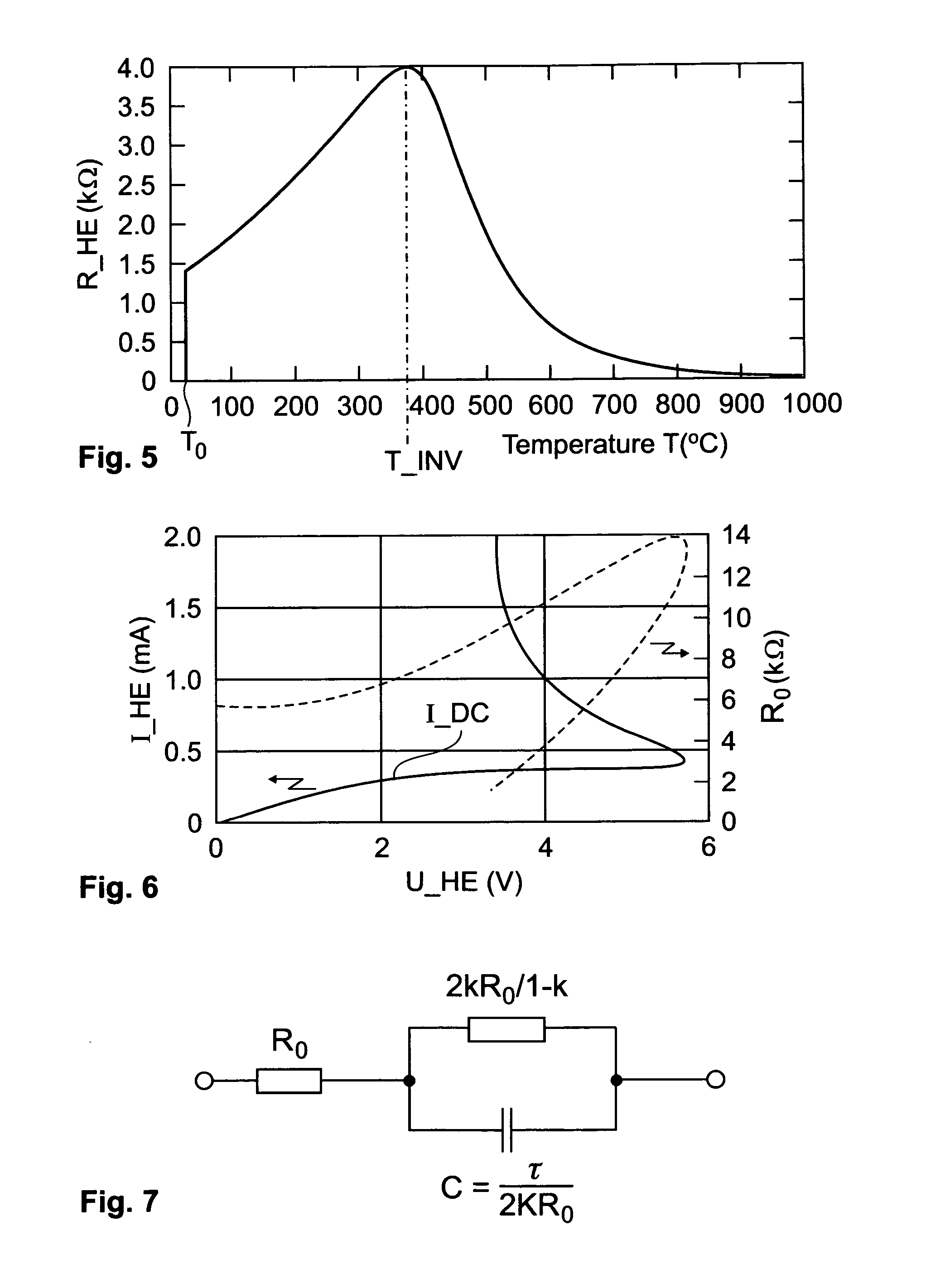Device and method for sensing a position of a probe
- Summary
- Abstract
- Description
- Claims
- Application Information
AI Technical Summary
Benefits of technology
Problems solved by technology
Method used
Image
Examples
Example
FIRST EMBODIMENT
[0079] A first embodiment of the present invention comprises a relaxation oscillator circuit, which is shown in FIG. 8. It is, during operation, electrically connected to the heater element HE of the respective probe 6. It is arranged in the control and information processing unit 12. It comprises voltage sources being designed for generating a first and a second bias voltage potential V_b1, V_b2, respectively.
[0080] The heater element HE may be represented by its electrical equivalent circuit according to FIG. 7. When operating an electrical heater in the area of the plateau region of the current / voltage interrelationship curve I_DC, the parallel resistance to the electrical capacitance C_HE of the heater element HE may be assumed to be significantly greater than the operating point electrical resistance R_0. It is to be noted that the operating point may be represented by a current source being arranged in a parallel fashion to the equivalent circuit according to...
Example
SECOND EMBODIMENT
[0093] A second embodiment of an electronic circuit enabling the sensing of the position of the heater element HE relative to the storage medium 2 comprises an LC-resonating circuit and is shown in FIG. 10. During operation of the circuit, the heater element HE is electrically connected on one side to the current / voltage converter 40 and on the other hand the heater element is connected to an output of a feedback amplifier 50. The heater element HE is arranged electrically in parallel to an inductance L.
[0094] The output of the feedback amplifier 50 has a signal that is representative of the resonance frequency f_RES_LC of the LC-resonating circuit. A Q factor will be of order unity for resonance frequencies comparable to 1 / tau_el, which renders this circuit practical preferably for low frequency applications (f_RES_LC0).
[0095] In this embodiment, the resonant frequency f_RES_LC is proportional to the electrical relaxation time tau_el and, hence, the thermal rela...
Example
THIRD EMBODIMENT
[0096] A third embodiment comprises a RC delay line oscillator and is shown in FIG. 11. The electrical resistors R1 and R2 and the capacitors C1 and C2 are preferably dimensioned in the order of the operating point electrical resistance R_0 and respectively the electrical capacitance C_HE of the heater element HE. More preferably, they match the respective operating point electrical resistance R_0 and respectively the electrical capacitance C_HE of the heater element HE in a range of at maximum a factor 2 to 3. The advantage is that the resistors R1, R2 and the capacitors C1 and C2 do not have to exactly match the operating point electrical resistance R_0 and / or respectively the electrical capacitance C_HE of the heater element HE in order to obtain a signal that appropriately measures the thermal relaxation time tau. The RC delay line oscillator further comprises the current / voltage converter 40 and the feedback amplifier 50.
[0097] The output of the feedback ampli...
PUM
 Login to View More
Login to View More Abstract
Description
Claims
Application Information
 Login to View More
Login to View More - R&D
- Intellectual Property
- Life Sciences
- Materials
- Tech Scout
- Unparalleled Data Quality
- Higher Quality Content
- 60% Fewer Hallucinations
Browse by: Latest US Patents, China's latest patents, Technical Efficacy Thesaurus, Application Domain, Technology Topic, Popular Technical Reports.
© 2025 PatSnap. All rights reserved.Legal|Privacy policy|Modern Slavery Act Transparency Statement|Sitemap|About US| Contact US: help@patsnap.com



